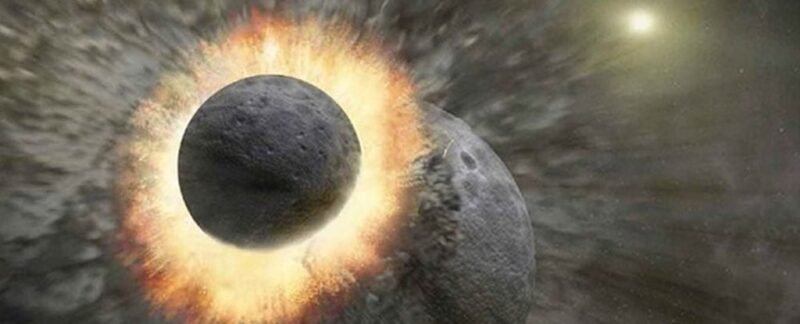Essential Insights
-
Unique Earth Formation: Earth became hospitable for life primarily due to its favorable accretion of carbonaceous chondrites (CCs), which provided vital organic compounds and volatiles, setting it apart from other rocky planets.
-
Theia’s Role: The giant impactor, known as Theia, likely delivered significant amounts of CC material during Earth’s formation, reinforcing the idea that this collision was instrumental in creating a life-sustaining environment.
-
Simulations Conducted: Researchers used dynamic simulations to model the Solar System’s formation, examining how the movement of giant planets like Jupiter influenced the distribution of CCs, resulting in a higher concentration on Earth than on Mars.
- Complex Planetary Dynamics: The study highlights the intricate interplay of factors, including the migration of outer planets and the subsequent delivery of carbon to inner rocky planets, suggesting that multiple variables must align for a planet to support life.
Research Uncovers Cosmic Origins of Life on Earth
New research suggests that a massive cosmic impact may explain why Earth, unlike its rocky neighbors, flourished with life. Scientists focus on the role of carbonaceous chondrites, which are meteorites rich in essential chemicals, in shaping our planet’s potential for habitability.
About 4.5 billion years ago, the Solar System brimmed with chaos. Planets formed alongside countless planetesimals and embryos colliding in a frenzied dance. Earth, during this tumultuous time, amassed more carbonaceous chondrites than any other rocky planet. This influx brought vital elements necessary for life.
Researchers from the Institute of Astrophysics and Space Sciences conducted simulations to explore this theory further. Their study, "Dynamical Origin of Theia, the Last Giant Impactor on Earth," illustrates how Theia, a large impactor believed to have struck Earth, likely delivered much of these carbon-rich materials. The findings will appear in the journal Icarus.
Cosmochemistry, the study of elemental distribution in the universe, played a crucial role in this research. The scientists differentiated between two categories of meteorites: carbonaceous chondrites (CCs) and non-carbonaceous meteorites (NCs). CCs originate from the outer Solar System and contain water and organic compounds vital for life.
The researchers ran various simulations to test how these materials distributed throughout the Solar System. They investigated three scenarios: one with small CCs, another with large CCs, and a mixed scenario that combined both. Each simulation revealed intriguing insights. For instance, under a specific scenario where giant planets shifted their orbits, Earth experienced a surge of CC material.
Ultimately, the models show that parts of Theia may have held significant carbon content, making Earth’s atmosphere hospitable to life. This aligns with previous studies that propose Theia’s collision was a turning point for Earth’s development.
While this cosmic event may seem distant, its implications reach far beyond our planet. Understanding how Earth became the cradle of life enhances our knowledge of what makes other planets viable for life. Observing how external forces shape planetary compositions can inform future space exploration and the search for extraterrestrial life.
These findings highlight the delicate balance of cosmic events that fostered life. As scientists continue to unravel these mysteries, they open doors to advancements in technology and space research, shaping humanity’s path toward interstellar exploration.
Discover More Technology Insights
Dive deeper into the world of Cryptocurrency and its impact on global finance.
Stay inspired by the vast knowledge available on Wikipedia.
QuantumV1

